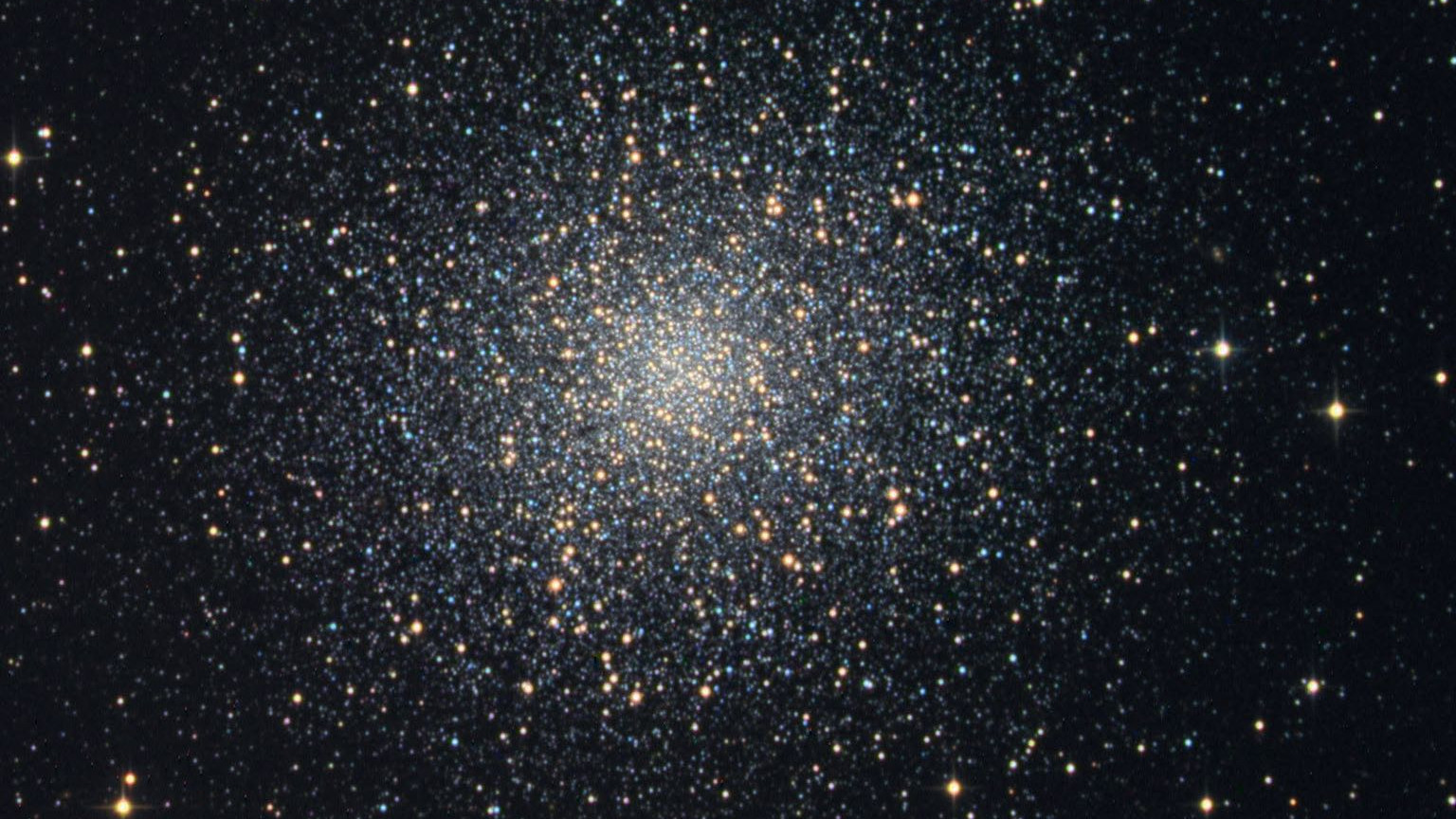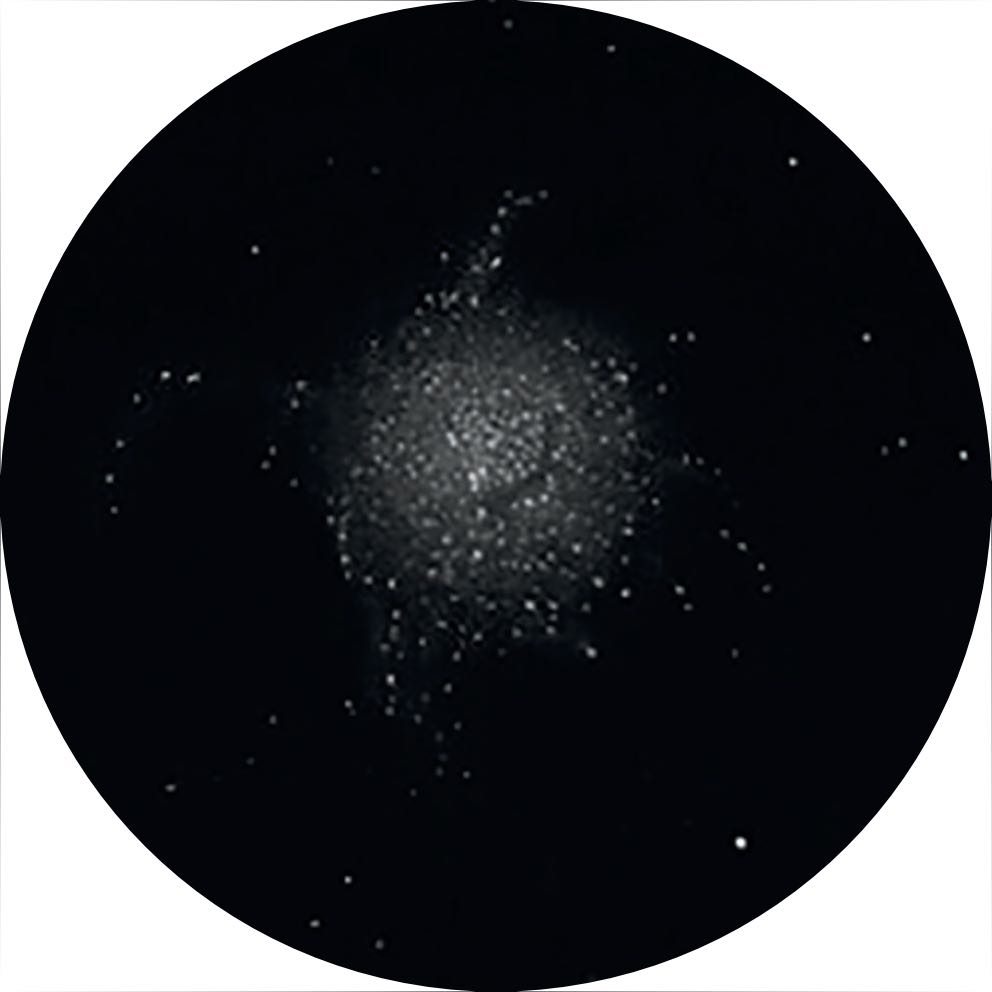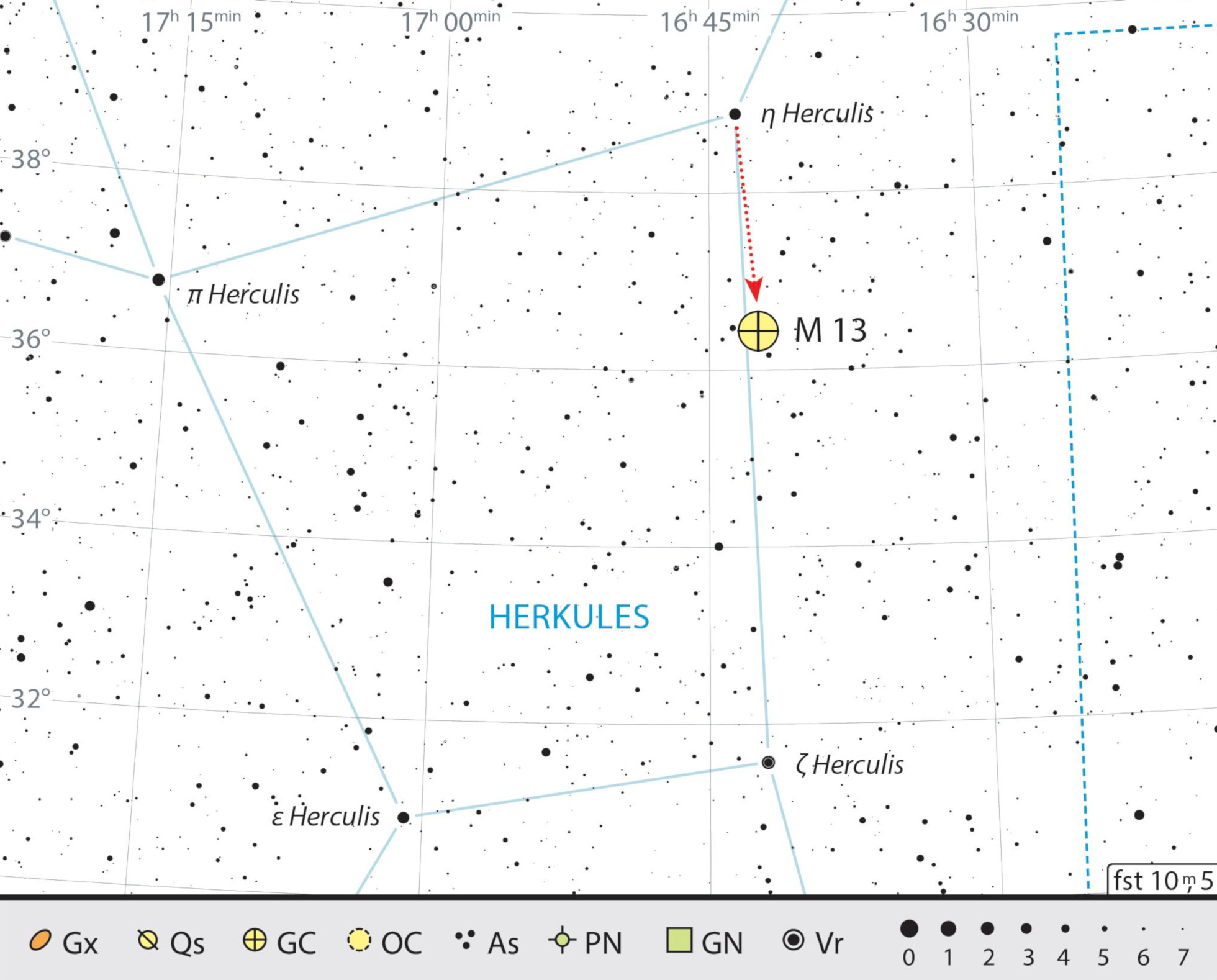The Hercules Globular Cluster M13
Bright and quick to find: this showpiece globular cluster is awesome, even from the city.
 The globular cluster M13 is a worthwhile object also for city astronomers.
Michael Breite, Stefan Heutz and Wolfgang Ries / CCD Guide
The globular cluster M13 is a worthwhile object also for city astronomers.
Michael Breite, Stefan Heutz and Wolfgang Ries / CCD Guide
Globular clusters do not usually enjoy much of a reputation among city astronomers as objects that offer spectacular viewing experiences. In most cases they can only be discerned as fuzzy clouds, the detection of fine detail is usually reserved for countryside observers. But there are exceptions.
Observing M3 has already given us an idea of the immense wealth of stars that a globular cluster can reveal. But M13, the magnitude 5.3 bright so-called Hercules Globular Cluster in the constellation of Hercules, is even more interesting. For the city astronomer it is surely the most beautiful object of its kind.
Nebula without stars
Even finding M13 is straightforward, as the cluster lies just 2.5° south of η Her, the north-west corner star of the striking square-shaped formation in Hercules. From here, a short pan to the south is all you need, until a rather striking trio of stars appears in your field of view, striking because it will remind you of a school protractor. The north-western star of this triangle loses its stellar character even at a small magnification, at just 15×, it turns out to be a small nebulous disc. This does not change much if you look through a telescope with a smaller aperture.
Messier himself must have experienced the 13th item in his catalogue in a similar way. On 1 June 1764, he noted: "Nebula without stars" However, it was actually not the French comet hunter who discovered this nebula, but Sir Edmond Halley fifty years earlier. Halley was an English astronomer who succeeded John Flamsteed at the Greenwich Observatory after his death in 1719.
Classic city object
If you observe M13 with a larger aperture it looks very different. In an 8-inch mirror telescope, the cluster shows up at 50× as a rich speck with a slightly fringed outer halo. Using the averted vision technique, you can even make out a slight granulation as the fuzzy object resolves into individual light points. This impression is reinforced with around 160× magnification. Stars located to the north-west of the cluster can be used as a focussing aid: once correctly focussed, points flicker in the inner area of the cluster, representing the light from individual stars. M13 stands even greater magnifications. This author has managed up to 285×, and with a little patience you will have the feeling of having penetrated deep into a sea of light, which is said to consist of around one million stars.
The bottom line: M13 is a classic city object. It can be found quickly, and is so bright that good observation results can be achieved even with small telescopes. However, it is only at high magnifications that the globular star cluster reveals its full splendour. M13 is proof that large instruments can sometimes, even for city astronomers, be worthwhile.
 Finding chart for M13. J. Scholten
Finding chart for M13. J. ScholtenAuthor: Karl-Peter Julius / Licence: Oculum-Verlag GmbH
